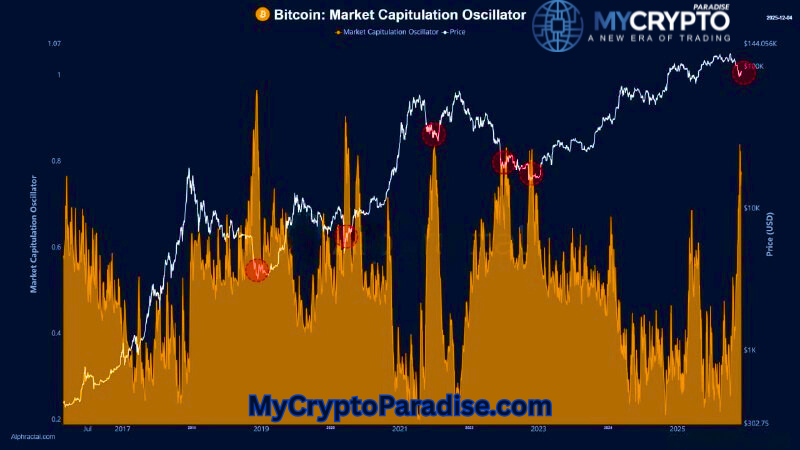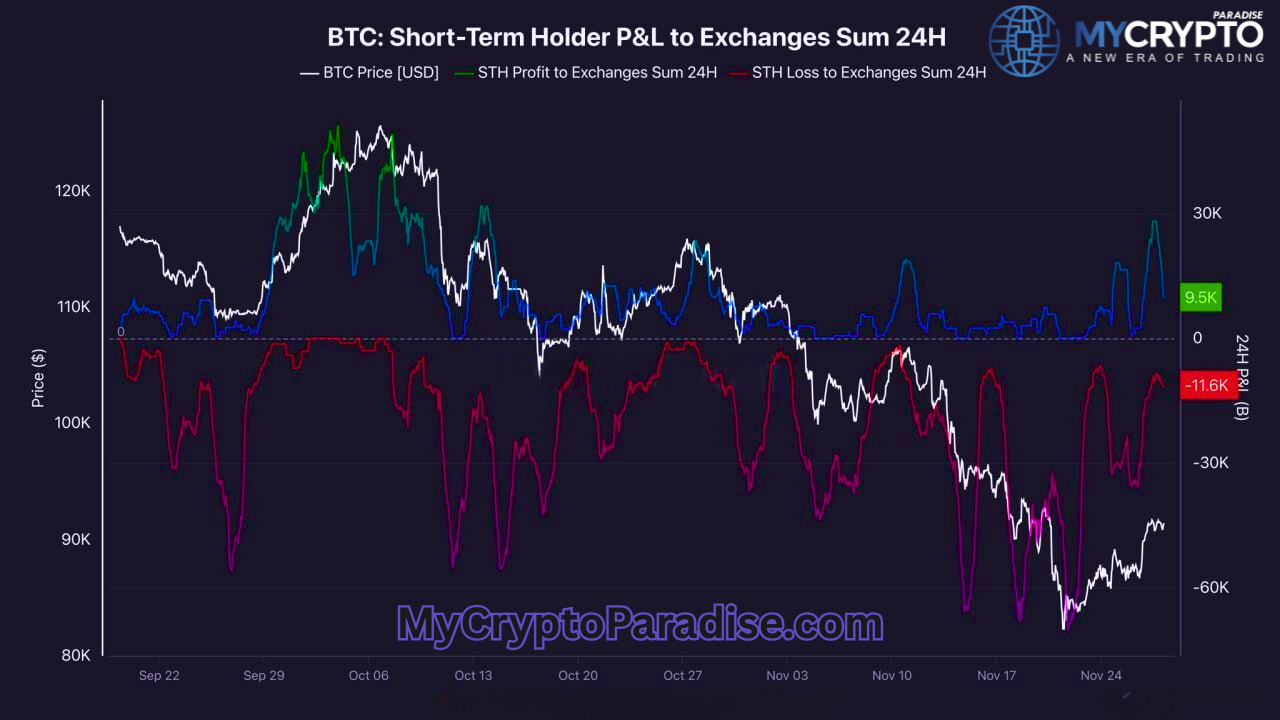Introduction
Many people find it interesting to trade crypto. It seems an exciting and potentially lucrative venture, but it can also be risky and complex. One popular trading strategy is to use chart patterns to identify potential buy and sell opportunities. One such pattern is the falling wedge pattern, which can be used to identify potential price reversals in a downtrend. In this article, we will explore how to trade crypto using the falling wedge pattern.
What is the falling wedge pattern?

The falling wedge pattern is a bullish chart pattern that forms during a market downtrend. It is characterized by a series of lower highs and lower lows, with the trendlines converging towards each other. The upper trendline is descending at a steeper angle than the lower trendline, creating a wedge shape.
Traders look for a break above the upper trendline to confirm the pattern and signal a potential reversal in the downtrend. The pattern is considered to be complete when the price breaks above the upper trendline and then consolidates or retraces back to test the trendline as support.
A typical Case: AVAX/USDT 24-Hour Chart
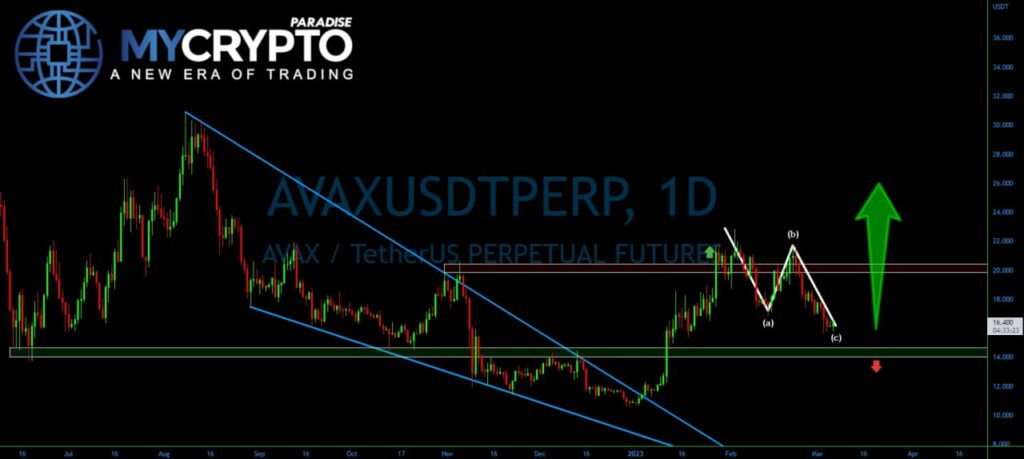
In the AVAX/USDT 24-hour chart above, the price action began a downtrend on the 28 USDT mark and slid all the way down towards the 10 USDT mark. Within successive lower highs and lower low, the dynamic resistance finally allowed a bullish breakout around the 12 USDT mark.
How to trade crypto using the falling wedge pattern?
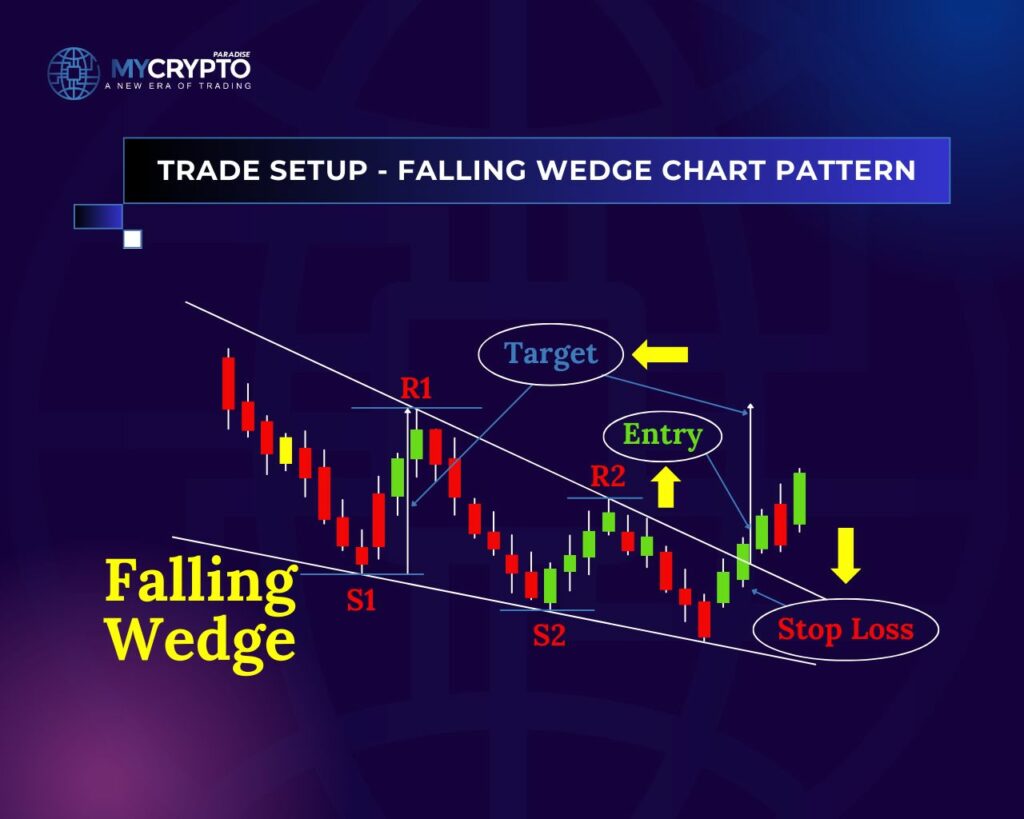
To trade crypto using the falling wedge pattern, follow these steps:
Step 1: Identify the falling wedge pattern setup
The first step is to identify the falling wedge pattern on the chart. Look for a series of lower highs and lower lows with converging trendlines. The upper trendline should be descending at a steeper angle than the lower trendline, creating a wedge shape.
Step 2: Wait for a break above the upper trendline
The second step is to wait for a break above the upper trendline to confirm the pattern and signal a potential reversal in the downtrend. This break should be accompanied by a significant increase in trading volume, which indicates strong buying pressure.
Step 3: Set your entry point and stop-loss
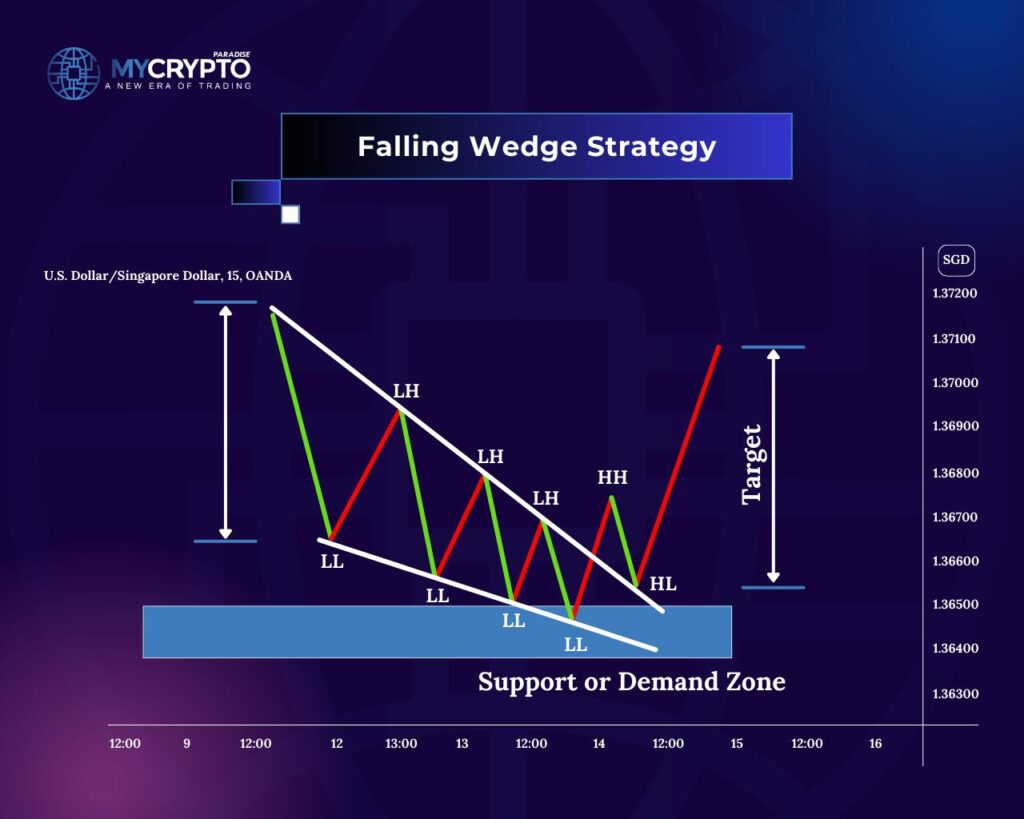
Once the pattern is confirmed, set your entry point just above the upper trendline. This is the point where you will enter the market and buy the cryptocurrency. Set your stop-loss just below the lower trendline to limit your potential losses if the price continues to move lower.
Step 4: Monitor the trade
Once you have entered the trade, monitor it closely. Look for signs of continued bullish momentum, such as higher highs and higher lows. If the price retraces back to test the upper trendline as support, this can be a good opportunity to add to your position.
Step 5: Take profits
Finally, take profits when the price reaches your target level. This could be a previous high or resistance level, or you could use a trailing stop to capture as much profit as possible while still protecting your gains.
Parts of a Falling Wedge Pattern
A falling wedge setup is a bullish chart pattern that forms when the price of an asset is trading within a narrowing price range, creating a wedge-shaped pattern that slopes downward. The characteristics of the pattern is a series of lower highs and lower lows, and it typically indicates that the asset is experiencing a period of consolidation before a potential breakout to the upside.
The parts of a falling wedge setup include:
Trendlines: The wedge contains two trendlines, the upper trendline, and the lower trendline. The upper trendline is drawn by connecting the highs of the price action, while the lower trendline is drawn by connecting the lows of the price action.
Volume: During the formation of the falling wedge pattern, there is usually a decrease in trading volume. However, as the pattern approaches its apex, trading volume typically starts to increase, indicating potential bullish pressure building up.
Timeframe: The timeframe of the pattern can vary, but it is typically several weeks to several months. The longer the pattern takes to form, the more significant the potential breakout may be.
Breakout: The falling wedge pattern is confirmed when the price breaks out above the upper trendline with increased trading volume. Traders typically look for a breakout that is accompanied by a surge in trading volume to confirm the validity of the pattern.
Price target: The price target for the falling wedge pattern is typically calculated by measuring the height of the pattern at its widest point and adding it to the breakout point. This gives traders an idea of how much the price could potentially move once the breakout occurs
Tips for trading crypto using the falling wedge pattern

Here are some tips to keep in mind when trading crypto using the falling wedge pattern:
Look for strong volume: A break above the upper trendline should be accompanied by a significant increase in trading volume, which indicates strong buying pressure.
Consider the timeframe: The falling wedge pattern is successful on any timeframe, but it is more reliable on longer timeframes such as the daily or weekly chart.
Use other indicators: The falling wedge pattern usually work with other technical indicators such as moving averages, MACD, or RSI to confirm the pattern and identify potential entry and exit points.
Manage risk: Set your stop-loss just below the lower trendline to limit your potential losses if the price continues to move lower.
Take profits: Take profits when the price reaches your target level, and consider using a trailing stop to capture as much profit as possible while still protecting your gains.
Conclusion
The falling wedge pattern is a bullish chart pattern. Traders use it to identify potential price reversals in a downtrend. Traders look for a break above the upper trendline to confirm the pattern.







